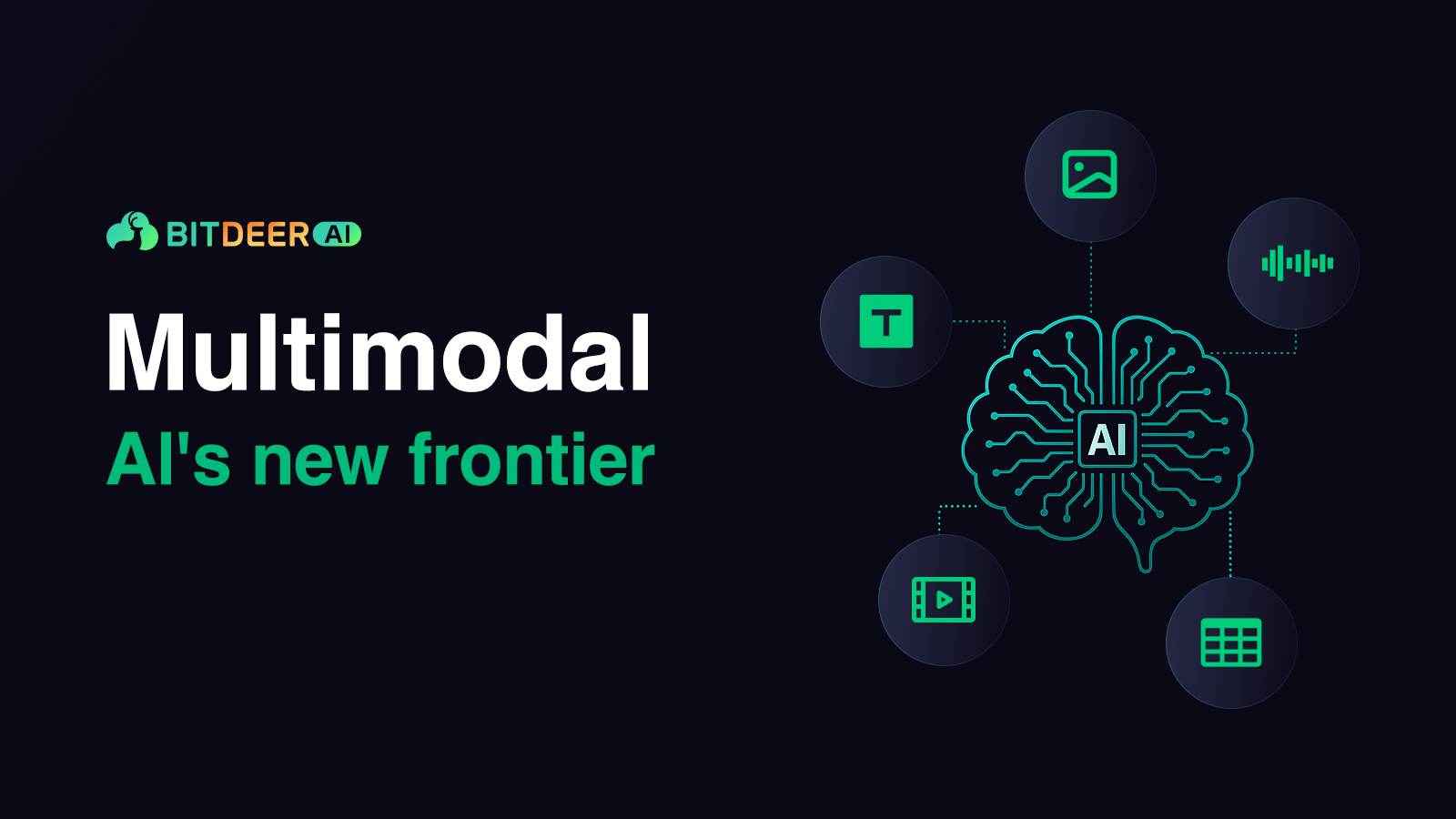What is Multimodal AI?

Artificial Intelligence (AI) is rapidly evolving from narrow, single-task models to more sophisticated systems capable of perceiving and reasoning across multiple types of inputs. This evolution is embodied in multimodal AI, a powerful class of AI that understands and synthesizes information from diverse data types like text, images, audio, video, and even sensor inputs.
But what exactly is multimodal AI, how does it work under the hood, and why is it revolutionizing industries from healthcare to e-commerce? Let’s unpack both the technical architecture and real-world applications of multimodal AI.
What is Multimodal AI?
Multimodal AI refers to systems that can process, interpret, and generate information from more than one modality (or data type). Unlike unimodal models that work with just text (like most early chatbots) or only vision (like classic image classifiers), multimodal models integrate data from multiple sources to make more informed and context-aware decisions.
Example: A multimodal AI model might:
- Analyze an image of a skin rash,
- Read accompanying patient notes,
- Listen to the patient's description of symptoms,
- Then provide a diagnostic suggestion.
This ability to “understand like a human” by combining modalities is what sets multimodal AI apart.
Technical Foundations of Multimodal AI
1. Modalities
- Text – Natural Language Processing (NLP)
- Vision – Computer Vision (CV)
- Audio – Speech Recognition & Sound Classification
- Video – Sequential combination of vision and audio
- Tabular/Sensor – Structured numeric/time-series data
2. Fusion Strategies
Integrating multiple modalities is a non-trivial task. There are three main strategies:
- Early Fusion: Combine raw features (e.g., pixel values and word embeddings) before input into the model.
- Intermediate Fusion (Joint Representation): Learn joint embeddings in a shared latent space using transformer-based architectures.
- Late Fusion: Process each modality independently, then combine the outputs (e.g., ensemble voting).
3. Transformer Architectures
Multimodal models often build on transformers (e.g., BERT, ViT, CLIP), using cross-attention mechanisms to align and reason across modalities. Key models include:
- CLIP (OpenAI): Learns joint text-image embeddings for tasks like image search or captioning.
- Flamingo (DeepMind): A few-shot visual-language model that can caption, classify, and answer questions about images.
- GPT-4: A general multimodal foundation model that takes text and image inputs.
These models use self-attention and cross-modal attention layers to correlate and prioritize features from each modality.
Business Applications of Multimodal AI
1. Healthcare Diagnostics
Multimodal AI is transforming medical imaging and clinical decision-making by combining:
- Radiology scans (X-ray, MRI)
- Patient records
- Genomic data
- Doctor-patient dialogues
Example: A model like Google’s Med-PaLM M (Multimodal)can interpret images and text in tandem to assist with diagnosis and patient care.
2. E-commerce and Retail
AI systems can now:
- Understand a product photo
- Read its description and customer reviews
- Predict market trends or recommend personalized products
Example: Visual search engines (e.g., “search by photo”) and contextual recommendation engines (e.g., combining browsing behavior with image data).
3. Autonomous Vehicles
Cars equipped with AI don’t rely on just one sensor, they combine:
- Camera footage
- LiDAR scans
- GPS data
- Sound sensors (e.g., for emergency sirens)
This sensor fusion is critical for safety and situational awareness.
4. Content Creation & Marketing
Creators are leveraging multimodal tools to:
- Generate videos from text prompts
- Add voiceovers automatically
- Translate content into different languages and formats
Example: Platforms like Runway, Synthesia, or Pika Labs allow video production using text + image + audio input, democratizing content creation.
5. Customer Service and Virtual Agents
Multimodal virtual assistants can:
- Read support tickets
- Interpret screenshots or photos
- Understand voice queries
- Respond with voice, video, or written guidance
This enables richer and more human-like interactions.
Advantages of Multimodal AI
Challenges in Building Multimodal Systems
Despite its potential, multimodal AI brings several challenges:
- Data Alignment: Ensuring that data across modalities refers to the same event or object.
- Scalability: Large models with multiple modalities can be computationally expensive.
- Bias & Fairness: Multimodal inputs can amplify existing biases if not managed properly.
- Interpretability: Explaining decisions across modalities is often difficult.
Research continues into contrastive learning, multimodal embeddings, and efficient attention mechanisms to address these issues.
The Future of Multimodal AI
We are moving toward truly generalist AI systems, models that can do more with less supervision and more context. With technologies like agentic multimodal systems, where AI autonomously reasons, plans, and acts across tools and media types, we’re on the path to artificial general intelligence (AGI).
Some trends to watch:
- Multimodal Foundation Models trained on massive web-scale data
- Agentic AI that interacts with external APIs, documents, and humans
Final Thoughts
Multimodal AI is not just a buzz-word, it represents a fundamental shift in how machines interact with the world. By integrating multiple data types, these systems approach human-like perception, communication, and decision-making.
For businesses, embracing multimodal AI means building smarter, more context-aware products, from intelligent healthcare diagnostics to immersive shopping experiences. And for developers and researchers, it's an exciting frontier filled with architectural innovation and complex engineering challenges. The future of AI is multimodal, and it’s already here.